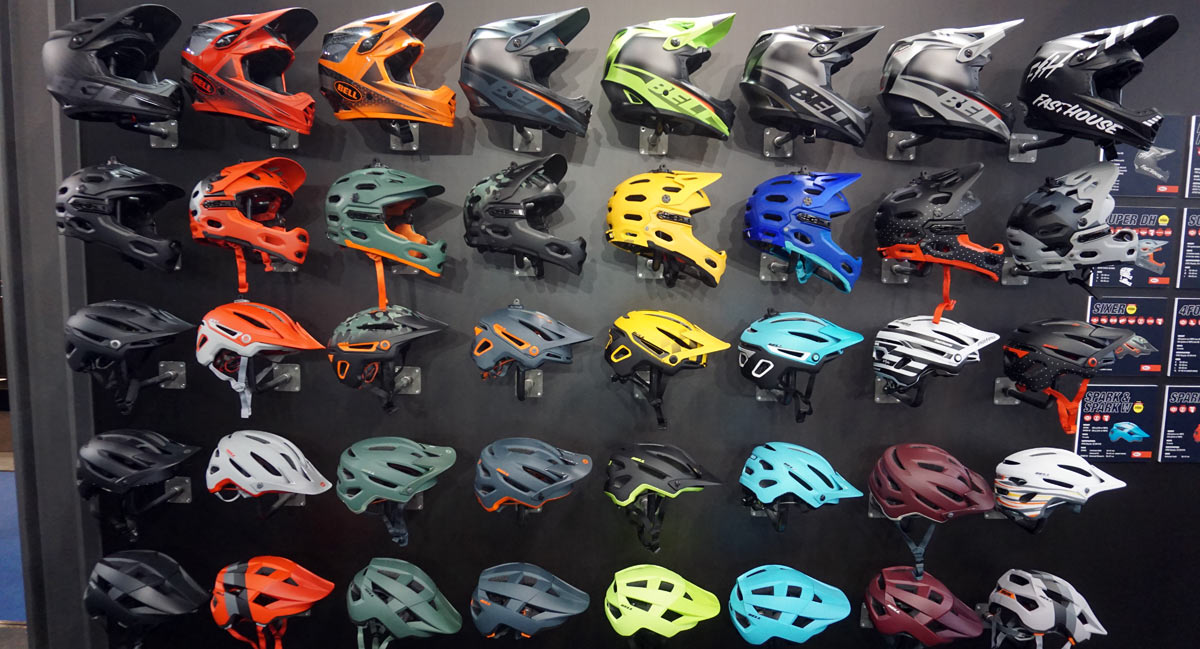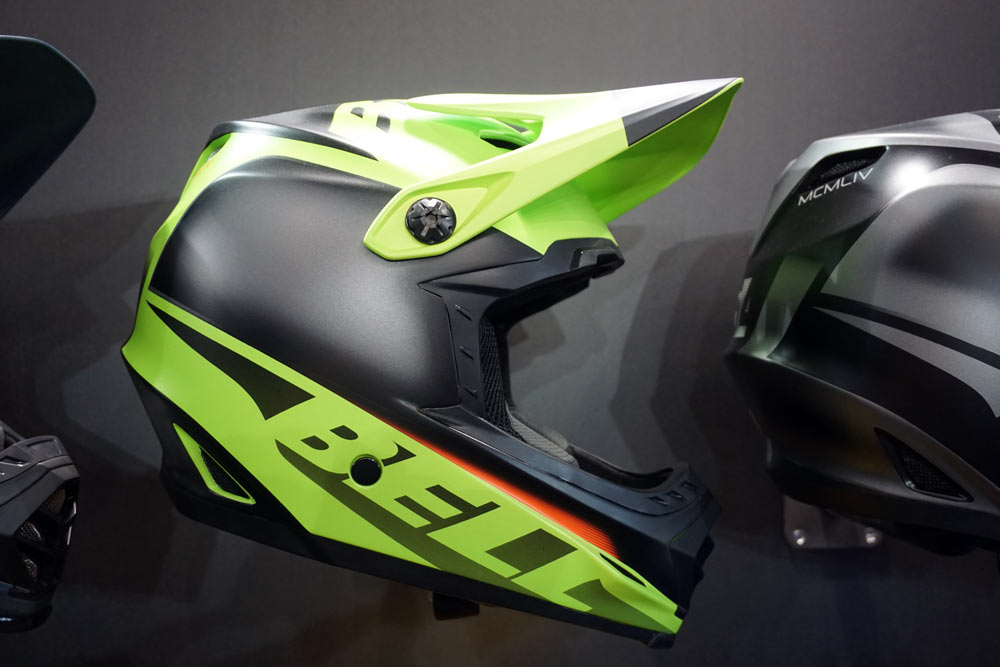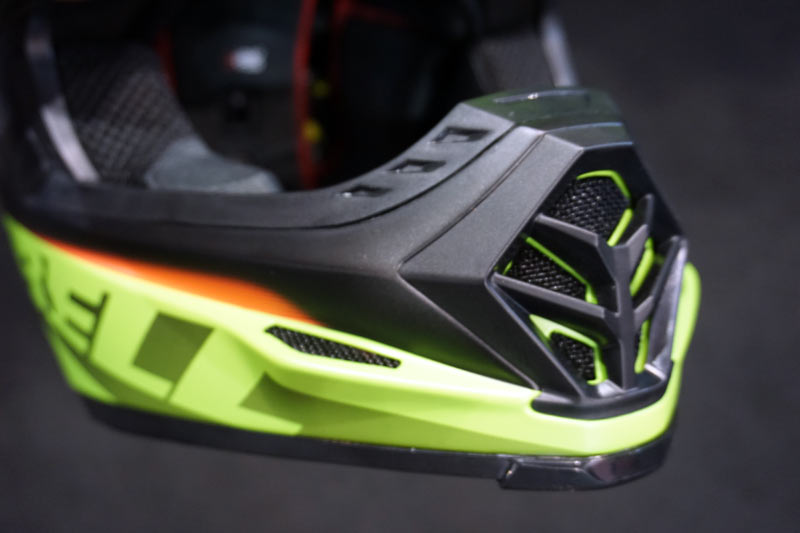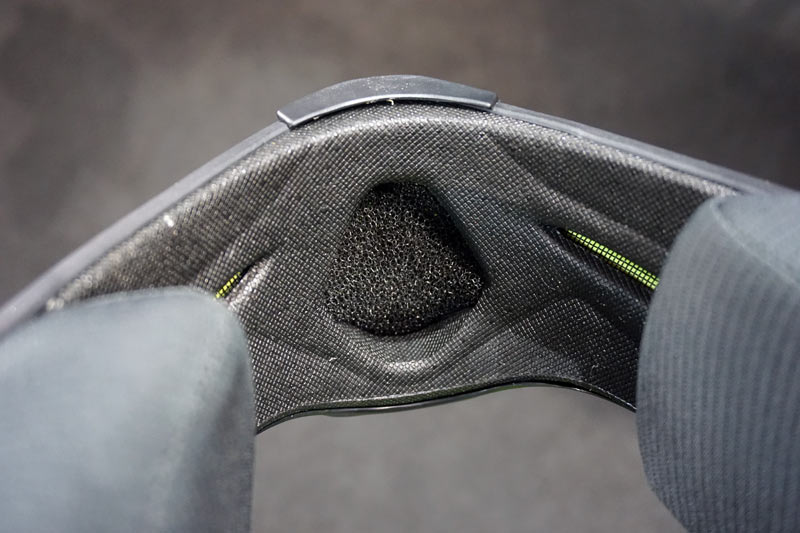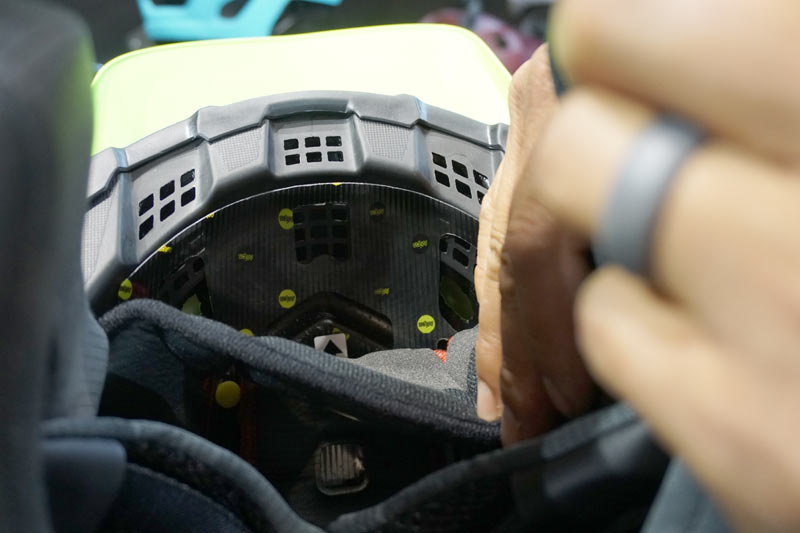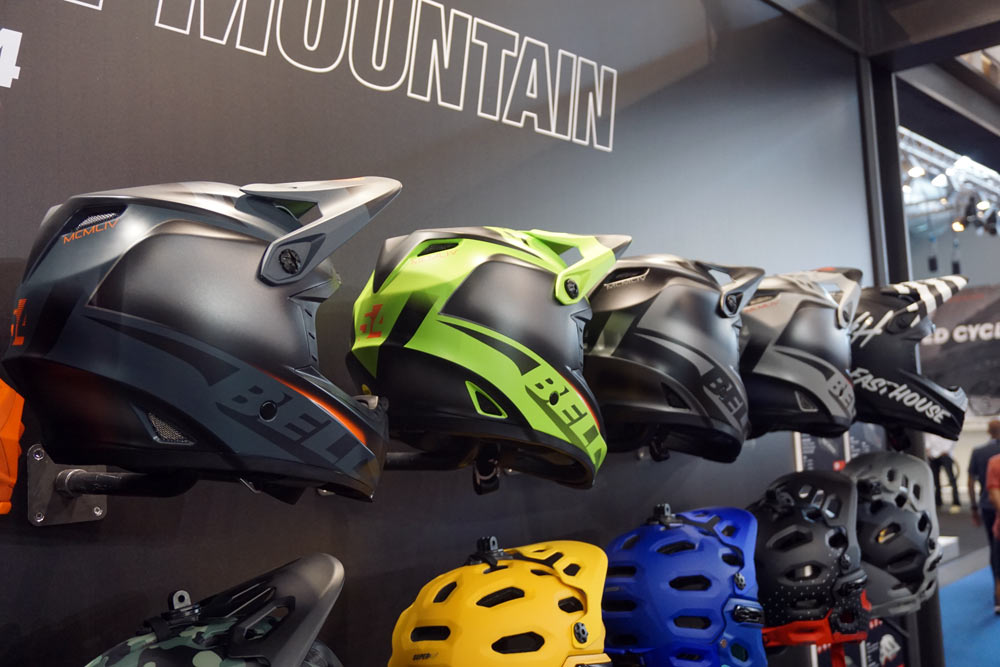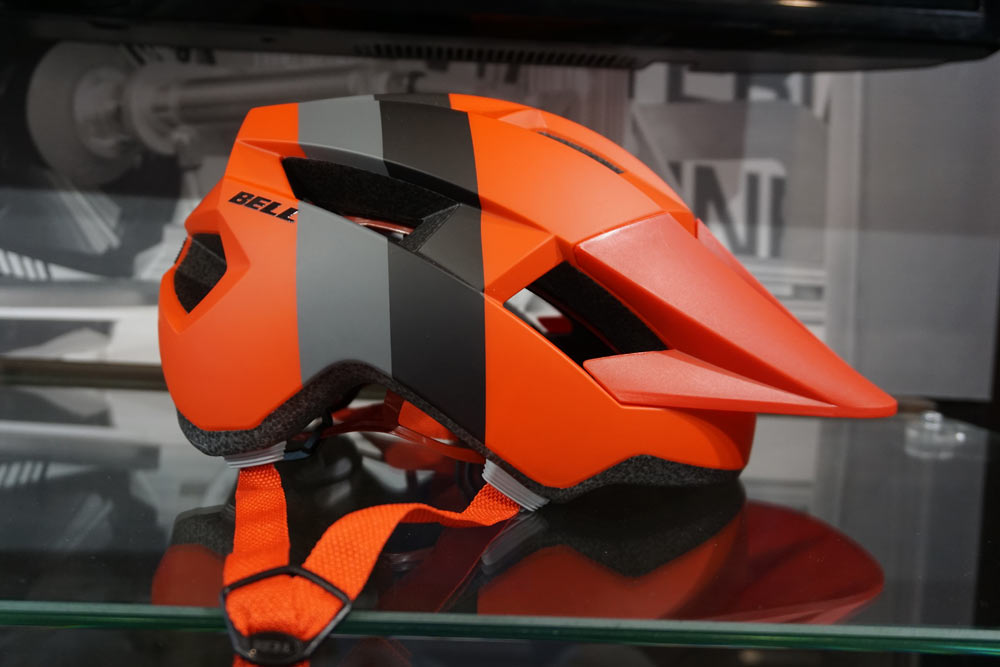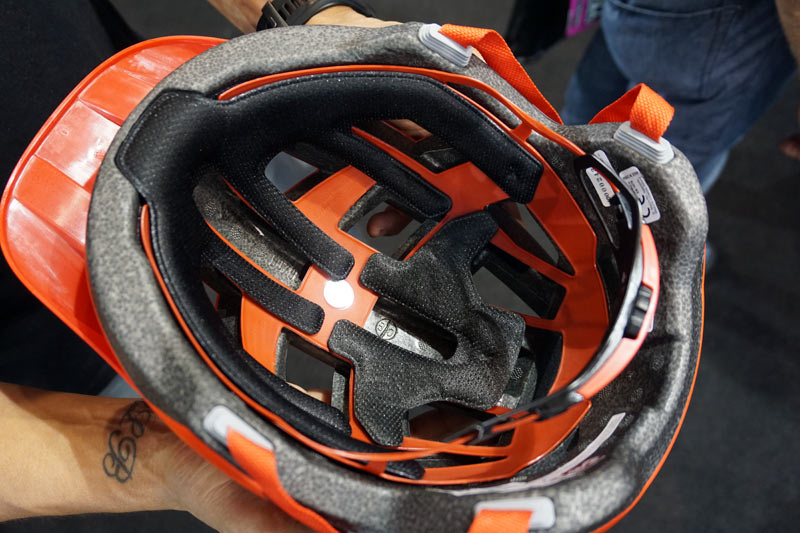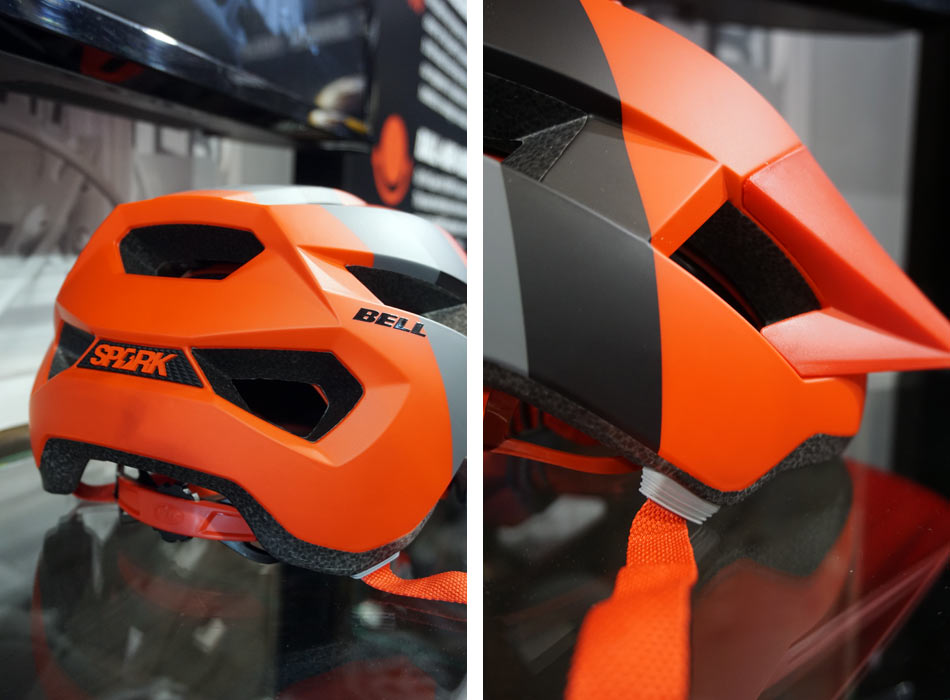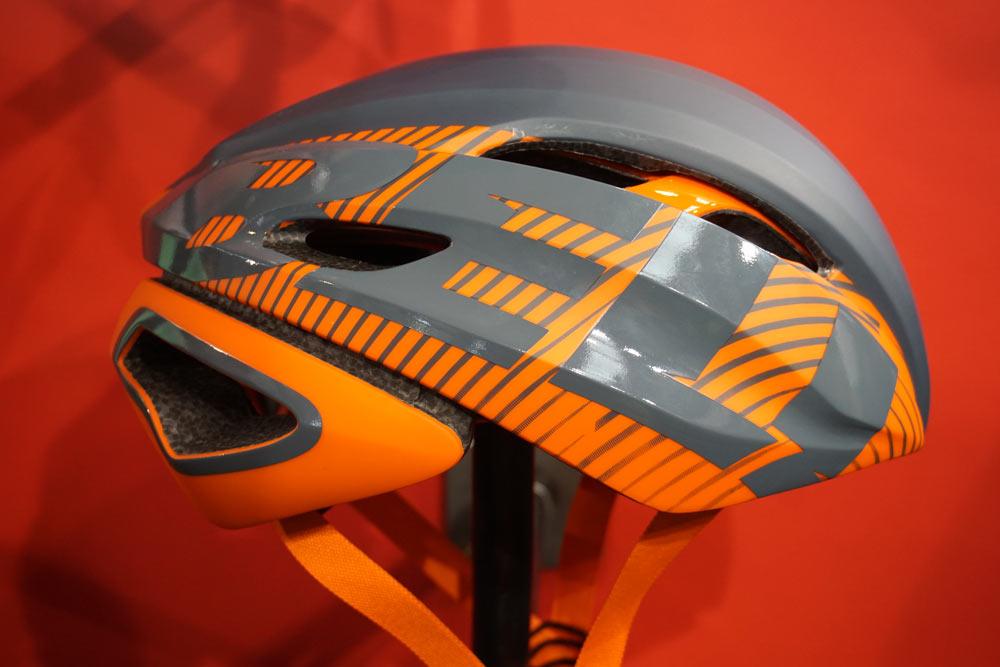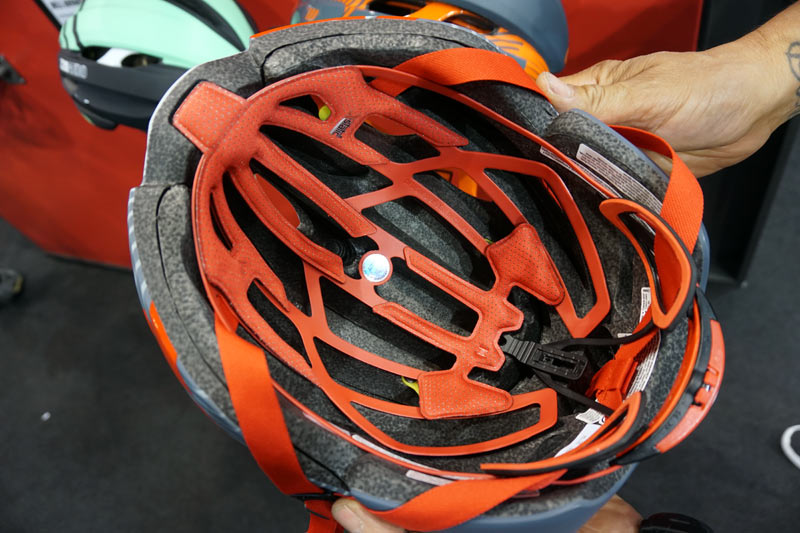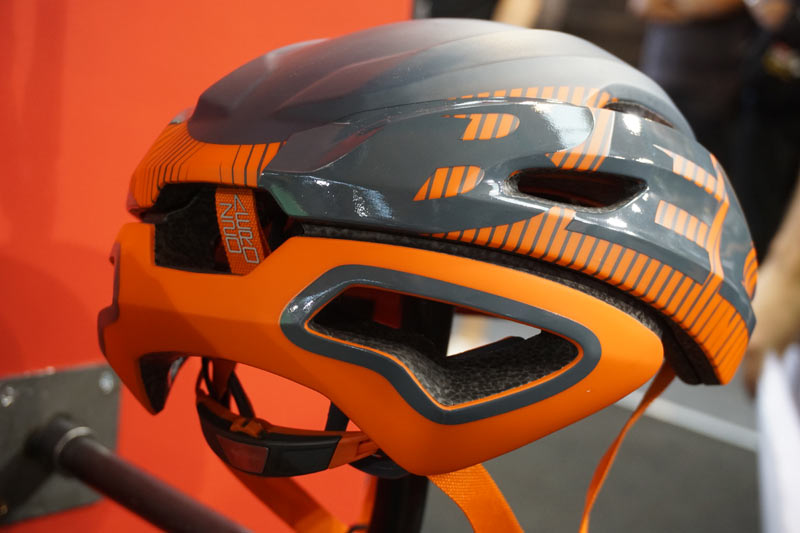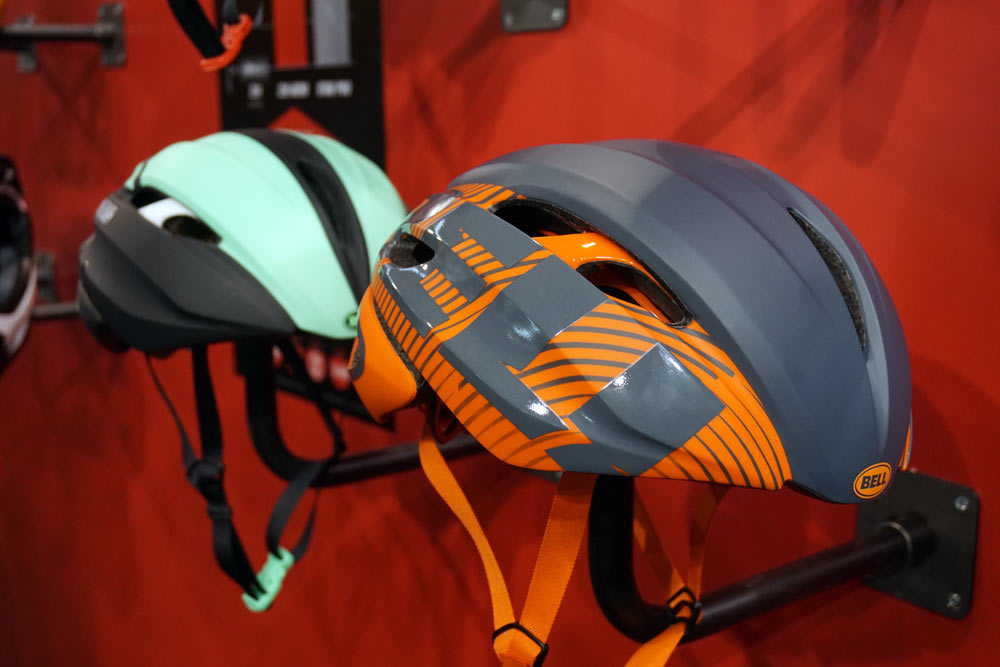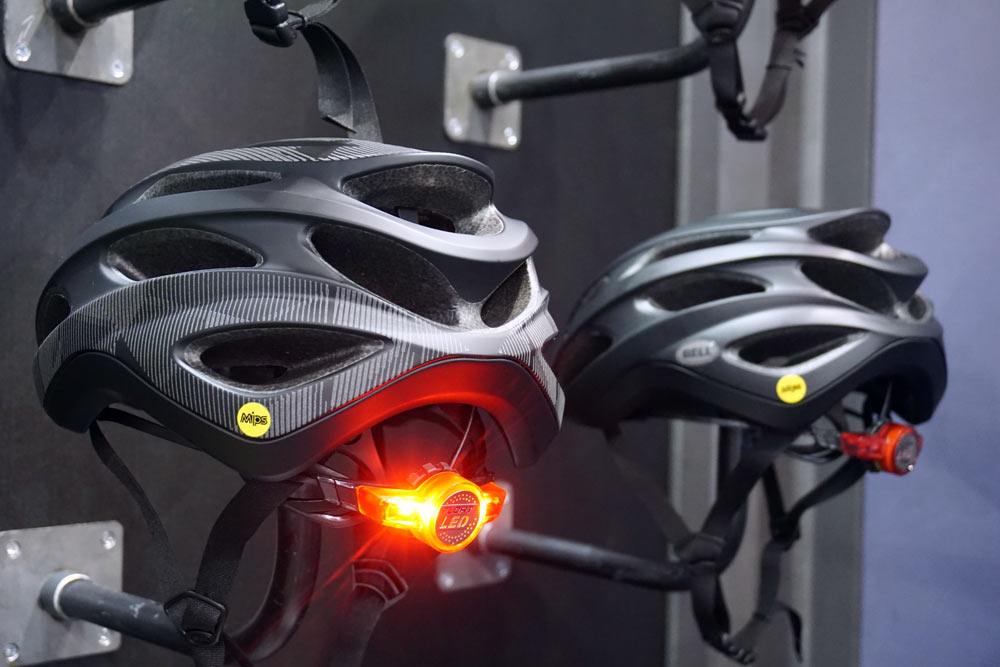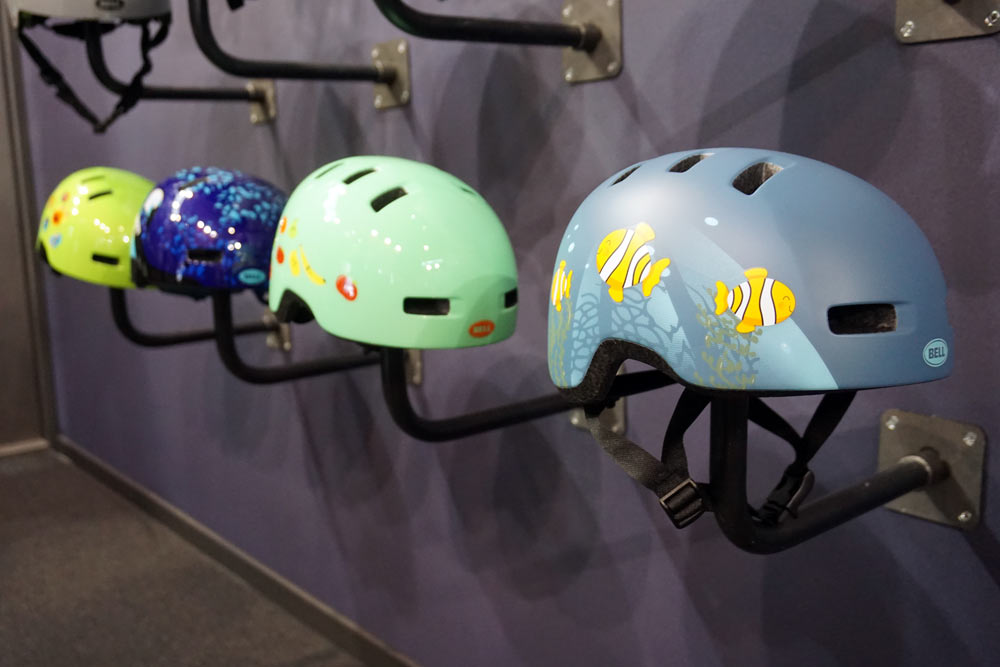For 2019, Bell Helmet’s collection gets a graphics and color overhaul for all models, with lots of killer new colors and graphics across the range, using a mix of matte upper colors and gloss accents along the bottom in-molding. And they introduce several new and improved helmets to give riders more of what they want. From the new Z20 Aero for road to a more affordable Full 9 DH full face, plus improvements to kids, commuter and trail helmets.
The current Full 9 is a full carbon full face with all the bells and whistles and a $400 price tag. It’s basically a scaled down moto helmet that’s EJECT compatible with magnetically attached cheekpads. Many helmets do their job up until you crash. This one has the features high end athletes who are pushing the limits need after the crash, too. Which is great, but also priced out of reach of many cyclists.
Until now, the Transfer 9 has been the lower price full face option, but it’s quite a different helmet than the Full 9, having a different liner, snap-in cheek pads and a different shape. The new Full-9 Fusion replaces that and uses the same mold as the carbon Full 9, but uses a fiberglass shell to cut costs. That doesn’t mean it’s cutting features, though.
It uses a lightweight EPP foam in the chin bar and adds MIPS. It’s also 90g lighter than the Full 9.
The tradeoffs are no EJECT compatibility and regular snap-in cheek pads. Claimed weight is 1,000g, and retail is $230.
The new Spark is a price point mountain bike helmet that falls under the 540, which falls under the Sixer. It’s designed as an affordable trail riding helmet for folks that aren’t going to be as aggressive but still want solid protection. They’ll have three versions – standard, women’s and youth. It gets a fixed visor, which ensures it’s always in the right position, plus integrated MIPS, which means a lighter and lower profile.
It has the rubber panel on the back to keep visor straps in place, though you wouldn’t really be able to set the goggles up on the front under the visor since that piece is fixed. There are also small rubber pads around the strap insertions, so when you set it down, it’s not resting on and potentially damaging the EPS foam. It’ll be available in S/M and L/XL universal fits. Women’s models gets two colors, and the Spark Jr. gets four, including a single hi-vis option. Price is $/€50 for non-MIPS, $/€70 for MIPS.
2019 Bell Road Helmets
The goal for the new Z20 Aero helmet was to retain as many safety and tech features as a regular helmet, but put it into an aero shape. Progressive Layering puts two different densities of foam around the entire shell, with a second polycarbonate shell between them.
That hardshell between the layers lets them control the thickness of the two different foams across different areas of the helmet. The outer layer uses a firmer EPS, and the inner layer is softer.
It gets their Float Fit with MIPS, which uses a full 360º surround pulled by the retention dial, vertical adjustment and width adjustment for the rear retention cradles. It’s that combination of the better ventilated and lower profile MIPS design with the full range adjustability that sets this one apart from other aero helmets.
Compared to the regular Z20, which remains in the line, they say it saves 30.2 seconds over a 40km TT at 400 watt average power output.
The Formula LED is a new version of their Formula road helmet, which sits fourth down in their road range and works great as a commuter and general use helmet. So, they’ve built a USB-rechargeable tail light into the retention mechanism. Run times are 10 hours in pulse or 5 hours in strobe (both 10 lumens) or 2.5 hours in steady (with a brighter 23.5 lumen output). These make it one of the brightest lights integrated into a helmet. It’s replaceable in the event of a warranty issue, but not considered removable for charging as it’s screwed into place.
The Lil Ripper is a new toddler helmet for small kids that’s low profile and light weight. It’s an in-molded helmet that gets a low profile shape that won’t stick way up off their heads like many cheap kids’ helmets can. The back of the helmet is flatter, too, so when your kid is in a child’s seat riding on the back of your bike, it’s not pushing their head forward.
The strap uses a no-pinch buckle that’s fully enclosed and uses a seatbelt-like mechanism with release button. It’s placed on the side, making it easier for parents to close it without their kid’s cooperation (because we all know they like to fuss sometimes). A dialed retention mechanism helps get the fit right, too. Available in two sizes and lots of colors and graphics.
